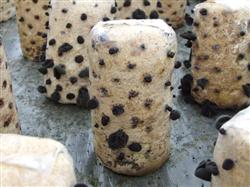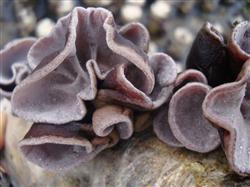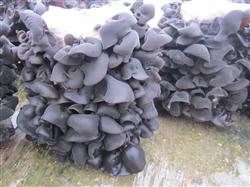What should Auricularia auricula pay attention to when it comes out of the ear?

What should Auricularia auricula pay attention to when it comes out of the ear? Please guide the auricularia auricula to produce high-quality and high-yield Auricularia auricula from May to October each year. The key techniques for the management of auricularia auricula are introduced as follows: first, the temperature range for controlling the growth of auricularia auricula is 16 ℃ ~ 35 ℃, and the most suitable temperature for growth is 24 ℃ ~ 28 ℃. In this temperature range, the higher the temperature, the faster the earpiece grows. When the temperature is below 18 ℃, the growth of the ear piece is slow, and when the temperature is more than 35 ℃, the growth of the ear piece is inhibited. When the temperature is below 20 ℃, it is necessary to reduce ventilation and do a good job of heat preservation. When the temperature exceeds 33 ℃, we should pay attention to spraying water to cool down and strengthen ventilation. Second, to adjust the humidity of the ear piece during the growth and development stage, the relative humidity of the air is 85%-95%. The relative humidity of the air can be maintained by artificial water spraying, and when spraying water, the water pipe can be used to spray directly to the ear piece and the space, but mainly to the space and the ground. Water spraying should be determined according to the climate and the growth condition of the earpiece. In sunny days, high temperature and large earpieces, the amount of water sprayed should be large, spraying water 3-4 times a day; on cloudy days, when the earpiece is small, spray water less or not. When the edge of the ear piece curls, blackens and hardens, it indicates that the humidity in the environment is insufficient, so it is necessary to spray water in time. The ear piece of Auricularia auricula has a strong ability to withstand drought, even if the ear piece blackens and becomes hard, dried and curled, and the growth can be restored after spraying and absorbing water, so the dry-wet potential should be adopted in the management to keep the environment in a dry-wet state. It is beneficial to improve the quality and output of ear pieces. During the period of high temperature, it is especially necessary to do a good job of alternating dry and wet management. if you are in a high-temperature and high-humidity environment for a long time, it is very easy to have ears. After each spray, ventilation is combined with ventilation to let the excess water off the earpiece. In continuous rainy days, it is necessary to increase ventilation to prevent "ear flow". Third, increase the intensity of the light has a great impact on the quality of the ear piece, in the strong light, the ear piece is thick, dark and soft, the fluff is thick and long, and the ear piece is black when it is dry. Under the condition of low light or close to dark environment, the ear piece is light and light red, the ear piece is thin, the ventral plush is thin and short, not obvious, and the ear piece is reddish brown and translucent after drying. Therefore, the ear pieces of different quality can be produced by adjusting the light intensity of the ear environment to meet the needs of the market. Fourth, maintain ventilation in the process of the growth and development of the ear piece, it is necessary to absorb a large amount of oxygen and discharge carbon dioxide. If the ventilation in the ear shed is poor, it will cause a high concentration of carbon dioxide environment, and the ear piece cannot differentiate and form normally. And grow into a "finger-like" fruit body. In the late growth stage of the ear piece, when the temperature and humidity are high, it will cause "flowing ears". Therefore, during the ear out period, it is necessary to keep the air in the ear shed smooth and fresh. As ventilation and heat preservation and moisturizing are contradictory, ventilation should be carried out according to temperature and humidity. If the temperature is low and the humidity is low, it is necessary to reduce ventilation; when the temperature is high and humidity is high, it is necessary to increase ventilation; in continuous rainy days, it is necessary to maintain ventilation, reduce humidity, and prevent "ear flow". The management of the fifth and second stubble Auricularia auricula can harvest 3-4 stubble in a row under normal circumstances, the quantity of 1-2 stubble is good, and the ear quality after 3 stubble is poor. After the first harvest, in order to promote the rapid change of tide to grow the second crop fruiting body, the management should pay attention to the following links: 1. Clean the ear base. After the first harvest, if the ear base is not removed, it is easy to mildew and rot when the temperature is high, which leads to miscellaneous bacteria pollution and can not be regenerated. For this reason, the whole flower should be cut off along the bag surface when harvesting, and the residual ear base on the hole mouth should be eradicated with a sharp knife. two。 Control dampness and raise bacteria. The postharvest bacterial bag should stop spraying water for 3-5 days, strengthen ventilation, dilute the covering on the shade shed, increase the light, and shrink the surface moisture. The mycelium in the bag continued to absorb nutrients and changed from the original reproductive growth to vegetative growth. The temperature should be controlled at 24 ℃ ~ 26 ℃ to promote the rejuvenation of the mycelium and provide strong mycelium conditions for the second stubble. 3. Humidify the ear. After the harvest of Auricularia auricula, the water content of the culture medium has been consumed. In order to induce primordium formation, a small amount of atomized water must be sprayed on the material surface, and the air in the shed should be ventilated normally every day; at the same time, temperature difference stimulation and alternation of dry and wet should be used to promote the rapid formation of primordium, differentiate into ear buds and grow into fruiting bodies. After each harvest, due to the relative decrease of water and nutrient content in the bag, the frequency and amount of water spraying should be increased step by step, and some yield-increasing elements can also be sprayed to increase nutrition, thicken the ear piece and increase the yield. Click to get more Auricularia auricula planting techniques
- Prev

How to plant Auricularia auricula in summer?
How to plant Auricularia auricula in summer? Please guide the substitute cultivation of Auricularia auricula and Auricularia auricula can be planted in spring and autumn, most of which are cultivated in spring. However, spring planting is generally at low temperature in the early stage, and it is difficult to develop bacteria. In the later stage, the temperature of the ear is high and there are many malformed ears. In order to solve this problem, oversummer cultivation with soil mulching was carried out. Feed 200.
- Next

How to plant black fungus?
How to plant black fungus? Please introduce the cultivation of Auricularia auricula can refer to the following planting methods: first, seasonal arrangement Auricularia auricula is a kind of wood-rot fungus, which belongs to medium-high temperature mushroom, its mycelial growth temperature range is 6: 35 ℃, the best temperature range is 22: 28 ℃.
Related
- Fuxing push coffee new agricultural production and marketing class: lack of small-scale processing plants
- Jujube rice field leisure farm deep ploughing Yilan for five years to create a space for organic food and play
- Nongyu Farm-A trial of organic papaya for brave women with advanced technology
- Four points for attention in the prevention and control of diseases and insect pests of edible fungi
- How to add nutrient solution to Edible Fungi
- Is there any good way to control edible fungus mites?
- Open Inoculation Technology of Edible Fungi
- Is there any clever way to use fertilizer for edible fungus in winter?
- What agents are used to kill the pathogens of edible fungi in the mushroom shed?
- Rapid drying of Edible Fungi

